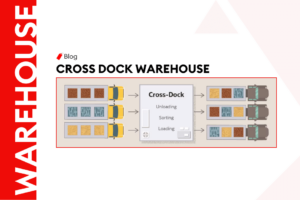Home » Services » Door to Door » IMEA » India » Exports India
Bridging Markets, Building Futures: Trade with Ease Between UAE and India
UAE-India
Exports
This page outlines essential export guidelines for seamless trade between the UAE and India.
General Export Guidelines
Businesses exporting goods between the UAE and India must comply with respective customs regulations, secure an export license (if needed), ensure product classification accuracy, and follow all health, safety, and quality standards. Proper documentation and timely customs clearance are essential to avoid delays or penalties.
Required Documents
Key documents required for exporting goods:
- Commercial Invoice
- Bill of Lading (or Airway Bill)
- Export License (if applicable)
- Packing List
- Certificate of Origin
- Export Declaration Form
- Insurance Certificate
- Health/Safety Certificate (for regulated goods)
India Export Regulations
Exporters from India must obtain an Importer Exporter Code (IEC), register with the Directorate General of Foreign Trade (DGFT), and ensure compliance with product-specific export restrictions. All exports must be classified under the Harmonized System (HS) Code and comply with the respective product quality standards. Additionally, exporters need to secure a Letter of Credit (LC) or advance payment from buyers to process the shipment.
Transiting Goods
Goods transiting through third countries en route to the UAE or India must adhere to specific transit procedures. Transit documents like the TIR Carnet, Transit Accompanying Document (TAD), or Electronic Transit Document (ETD) are required based on the countries involved. Customs declarations at entry and exit points of the transiting country must be completed, ensuring compliance with the respective transit agreements and ensuring safety and security of goods during movement.
Leading Export Commodities
India
- Petroleum Products
- Pharmaceuticals
- Textiles and Garments
- Iron and Steel
- Rice and Other Agricultural Products
UAE
- Petroleum and Petrochemical Products
- Aluminum Products
- Gold and Jewelry
- Plastics and Polymers
- Dates and Other Food Products
Frequently Asked Questions (FAQ)
What are the cargo handling capacities of major airports in India involved in UAE-India trade?
Indira Gandhi International Airport can handle over 1.8 million metric tonnes annually and features state-of-the-art cold storage facilities. Chhatrapati Shivaji Maharaj International Airport supports over 591 thousand metric tons of cargo each year and is equipped with dedicated freight terminals, and lastly, Kempegowda International Airport facilitates around 150,000 tonnes per year and offers extensive warehousing with a high-tech security system.
What are the main seaports in India for cargo operations between UAE and India, and what are their capabilities?
Mundra Port in Gujarat can handle over 338 million metric tonnes (MMT) of cargo annually and is the largest container port in India. Nhava Sheva (Jawaharlal Nehru Port) in Maharashtra handles over 5 million TEUs annually and has advanced deep-water berths, and lastly, Chennai Port in Tamil Nadu facilitates roughly 3,000,000 TEUs of cargo annually and has specialized automotive cargo handling capabilities.
What are the import duty rates and tax structures in the UAE and India for goods traded between the two countries?
In the UAE, goods are subject to customs duties ranging from 0% to 5%, with a standard VAT rate of 5%. Excise duties are higher for specific goods like tobacco and alcohol. In India, import duties vary by product, with rates ranging from 0% to 100% for luxury goods. Goods and Services Tax (GST) rates are 5%, 12%, 18%, or 28%, depending on the product category.
What documents are required for importing goods into India?
Essential documents for importing into India include a Commercial Invoice, Certificate of Origin, Bill of Lading or Airway Bill, Import License (if applicable), Packing List, Insurance Certificate, Customs Declaration Form, and an Importer Exporter Code (IEC) Certificate.
What are the typical payment methods and terms for trade between the UAE and India?
Common payment methods include bank transfers (SWIFT), Letters of Credit (LC), and Documentary Collections (DC). High-value transactions may use escrow accounts. Typical payment terms include credit periods of 30-60 days, which can be negotiated based on the trade relationship and market conditions. Transactions often use the UAE Dirham (AED), Indian Rupee (INR), and US Dollars (USD) for ease of international trade.
Related Articles
Anything you need, We’re here to Help

Chat With Us
Effortlessly schedule your next shipment with us for reliable and timely delivery.

Request a Quote
Receive a personalized shipping quote that meets your specific logistic needs.









